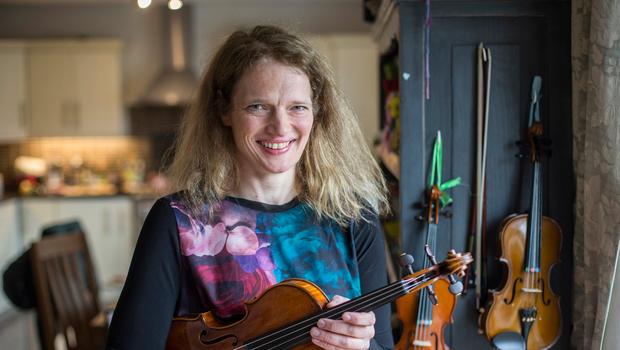It seems I can’t escape from Beethoven at the moment but then it is his 250th anniversary. A recent email from Gillian Hennessy of Cork’s Triskel Arts Centre tells me about its commemorative programmes.
Supported by the National String Quartet Foundation, the final Triskel event takes place at lunchtime on Saturday, March 7 with the Esposito Quartet, directed by the brilliant leader of RTÉ’s Concert Orchestra, Mia Cooper.
Separated by the première of Donnacha Dennehy’s Wig, the principal works are Janáek’s First Quartet, The Kreutzer Sonata, and Beethoven’s final essay in the genre, his Op. 135.
Subtitle
Despite its subtitle, the Janáek Quartet is not related to Beethoven’s Kreutzer Sonata. The Moravian composer took his inspiration from Tolstoy’s novel while Beethoven’s sonata was written for French violinist Rodolphe Kreutzer. Beethoven described him as a “dear kind fellow who, during his stay in Vienna, gave me a great deal of pleasure”.
The Op. 135 is thought to reveal Beethoven’s serene acceptance of the inevitability of death. This notion comes from a letter to his publisher Moritz Schlesinger, in which he wrote: “Here, my dear friend, is my last quartet. It will be the last; and indeed it has given me much trouble. I could not bring myself to complete the last movement.
“But, as your letters insisted, in the end I finished it. And that is the reason I have written the motto ‘The difficult decision – must it be?’ It must be!”
Now, while Beethoven wrote this to Schlesinger, ‘must it be?’ is also believed to have a less serious background. Ignaz Dembscher, a government official at whose house a number of Beethoven’s quartets were played, did not pay the composer. Disgruntled, Beethoven censured any further performances.
Little canon
Dembscher turned to Beethoven’s violinist friend Karl Holz for a solution. With Holz adamant about paying the 50 florins, Dembscher is said to have grudgingly muttered “must it be?” On learning this, the delighted Beethoven wrote down the words and music of a little canon – it must be. It must be. Yes, yes, yes, yes. Across with the wallet! Across! Across! It must be. Beethoven locked the motif in his brain.
Whatever about that, the last quartet is quite different from its immediate predecessors. It has a kind of spartan quality. Brevity is secured by concentration. Rests are frequent; climaxes brief. The essential ideas might even be in shorthand. The work was premièred in Vienna almost a year after the composer’s death in 1827.
Dating from 1923, Janáek’s First Quartet was written at the behest of the Bohemian Quartet to whom it is dedicated.
But its origins also came from the composer reading Leo Tolstoy’s short story The Kreutzer Sonata.
This portrayal of an unhappy, tortured, beaten woman, who is killed by a jealous husband, was the kind of plot, which appealed to Janáek. Indeed death, misery and jealousy are familiar subjects in his operas.
Like Beethoven’s Op. 135, in this Quartet the ideas are concentrated into a taut instrumental structure reinforced by close thematic association. Janáek said he con-ceived the piece “as a unified, intact, psychological drama”.


 Mia Cooper
Photo: Mark Condren
Mia Cooper
Photo: Mark Condren 